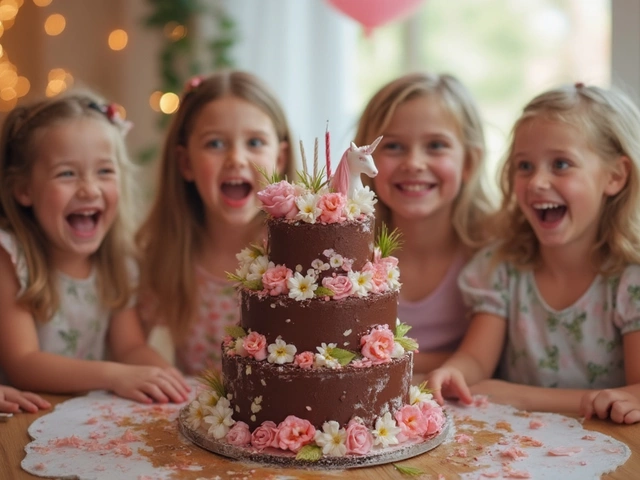Macaron History Timeline
Explore the fascinating journey of the macaron through history. Click on each event to learn more about its significance.
Key Takeaway:
The macaron evolved from a simple Italian almond cookie into an elegant French pastry through centuries of refinement and cultural exchange.
Ever wondered where those delicate, rainbow‑colored sandwich cookies came from? The answer isn’t as simple as “French” and it involves a mix of Italian cooks, a Medici queen, and a Parisian pastry shop that turned a humble treat into a global obsession. By the end of this read you’ll know who really invented the macaron, how it changed over the centuries, and what to look for when you bite into one.
Quick Takeaways
- The first almond‑based cookies resembling modern macarons originated in Renaissance Italy.
- Catherine de Medici brought the recipe to France in the 16thcentury.
- French royal bakers refined the technique, creating the two‑shell sandwich style we love today.
- Pierre Desfontaines of Ladurée popularized the filled macaron in the early 20thcentury.
- Authentic French macarons differ from Italian macaroons in texture, size, and filling.
From Italian Almond Cookies to French Royal Courts
macaron is a light, almond‑based sandwich cookie that originated in France but traces its roots to Italian cuisine. In the early 1500s, Italian pastry chefs in the Veneto region baked a simple mixture of ground almonds, egg whites, and sugar. Known as "Amaretti di Saronno" or "maccherone", these cookies were crisp on the outside and soft inside, eaten as a festive treat during weddings and religious holidays.
Catherine de Medici: The Bridge Between Italy and France
When the Italian noblewoman Catherine de Medici married King HenryII of France in 1533, she brought a brigade of Italian cooks to the French court. Among their baggage was the almond‑based cookie recipe. Historical records from the 1550s mention a "macaroon" served at the court of France. The name itself comes from the Italian word "macarrone", which later morphed into "macaron" in French.
Royal Refinement: From Single‑Layer to Two‑Shell Treats
For centuries the French version remained a single‑shell cookie, often glazed with a thin sugar coating. The turning point arrived in the early 19thcentury when pastry chefs at the French royal court began experimenting with piped batter and precise oven temperatures. By 1830, the signature sandwich style-two smooth shells embracing a flavored ganache or buttercream-had emerged. This new form required a stable meringue base, a technique refined by French bakers who called it "macaron de sable".
Pierre Desfontaines and the Ladurée Legacy
While the sandwich macaron spread among Parisian patisseries, it was Pierre Desfontaines, a young apprentice at the legendary Ladurée bakery, who turned the treat into a brand. In the 1930s he introduced a rotating palette of pastel shells and exotic fillings-raspberry, pistachio, even champagne. The visual appeal and Instagram‑ready colors helped the macaron leap from elite cafés to a worldwide phenomenon.
Macaron vs. Macaroon: Not the Same Cookie
Many people confuse the French macaron with the coconut‑based macaroon. Below is a quick side‑by‑side look:
| Attribute | French macaron | Italian macaroon |
|---|---|---|
| Primary nut | Almond flour | Coconut shreds |
| Texture | Soft, chewy interior with crisp shell | Chewy, dense, often gritty |
| Typical size | ≈2cm diameter, 1cm thick | ≈3cm diameter, thicker |
| Filling | Buttercream, ganache, jam, curd | Usually none; sometimes chocolate dip |
| Origin story | Italian recipe brought to France, refined in royal courts | Traditional Sicilian/Italian coconut cookie |
Spotting an Authentic French Macaron
If you’re buying macarons on the street, here’s a quick checklist:
- Shells should be smooth, glossy, and slightly domed-no cracks or dents.
- When you press a shell gently, it should give a gentle "snap" before yielding.
- Two shells of the same size should fit snugly; a gap means the batter wasn’t piped evenly.
- Look for a balanced filling-neither overpowering nor watery.
- Color should be natural; overly neon shades often mean artificial dyes.
From Royal Treat to Global Trend: Key Takeaways
Summarizing the journey:
- Almond‑based cookies began in Renaissance Italy.
- Catherine deMedici introduced the concept to France in the 1500s.
- French royal bakers turned a single‑layer biscuit into the iconic two‑shell sandwich around 1830.
- Pierre Desfontaines of Ladurée commercialized the pastel, filled version in the 20thcentury.
- Today the macaron is a symbol of elegance and creativity, enjoyed in boutiques from Paris to Tokyo.
Frequently Asked Questions
Did Catherine de Medici actually invent the macaron?
She didn’t invent it, but she introduced the Italian almond cookie to the French court, setting the stage for the French‑style macaron we know today.
What’s the difference between a macaron and a macaroon?
Macarons are delicate almond‑based sandwich cookies with a smooth shell and a flavored filling. Macaroons are dense coconut cookies without a filling and have a chewy texture.
When did the filled macaron become popular?
Pierre Desfontaines introduced the filled, pastel‑colored macaron at Ladurée in the 1930s, and it gained worldwide fame in the late 20thcentury.
Can I make authentic macarons at home?
Yes, but it requires precise temperature control, a stable meringue, and practice with piping techniques. A good recipe, a kitchen scale, and a silicone mat are essential.
Why are macarons so expensive in bakeries?
The cost reflects high‑quality almond flour, labor‑intensive preparation, and the premium branding that many boutique shops invest in.




